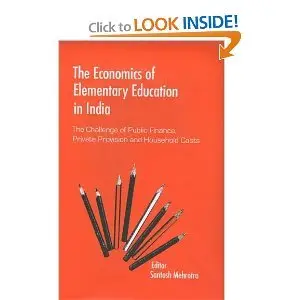The Economics of Elementary Education in India: The Challenge of Public Finance, Private Provision and Household Costs
SAGE Publications | January-1-2006 | ISBN: 0761934197 | 328 pages | PDF | 2MB
SAGE Publications | January-1-2006 | ISBN: 0761934197 | 328 pages | PDF | 2MB
Among all the large emerging market economies, India has one of the lowest educational indicators for a majority of its population living in its most backward states. These states account for most of the country’s children out of school and most of its illiterate population. Not surprisingly, they are the states with the highest incidence of poverty in India. This volume examines key aspects of the elementary education system in the poorer and educationally backward states of India. Providing the first state by state analysis of major cost and financing issues, the book is based on data gathered from one of the most comprehensive surveys conducted in recent times, which was specifically commissioned for this book.
The survey covered 120,000 households and a thousand schools spread over 91 districts in eight states. Written by leading education economists, the original essays in this volume: Analyze the major cost and financing issues in elementary schooling in seven of the eight states surveyed—Assam, Bihar, Madhya Pradesh, Rajasthan, Tamil Nadu, Uttar Pradesh and West Bengal; Identify recent initiatives made by the governments of these seven states; Systematically scrutinise the pattern of public spending in elementary education; Examine enrolment in government schools and the quality of education that they impart; Study household expenditure on schooling—the costs to parents of sending children to school; Compare government schools with private schools, showing how the private sector has begun to take over the work of government agencies, particularly in the poorer states. In a country where administrative records—concerning enrolment, drop-out, retention and repetition—are unreliable as a source of data, surveys and analyses of the type reported in this volume help policy-makers and scholars get a better picture of the ground realities. This interesting and lucidly written book will be of interest to those in the fields of education (particularly primary and elementary education), health, welfare economics, and education finance and funding. It will also attract the attention of NGOs, administrators, and donors and multilateral agencies active in the field of education



